So far, no disasters with the seedlings, so they are still doing well:
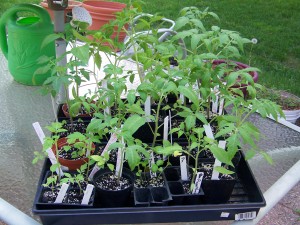
Tomatoes!
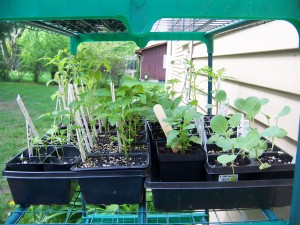
More Seedlings
I also have some lettuce starts as part of the Slow Food Huron Valley seed trial:
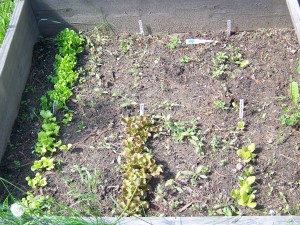
Lettuce Test Plot
The upper left is ‘Grand Rapids’:
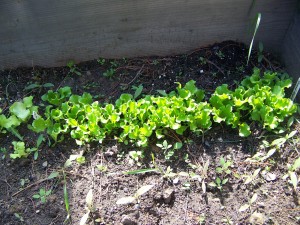
Grand Rapids
In front of that is some ‘Black-Seeded Simpson’ I planted for comparison:

Black-Seeded Simpson
Front and center is ‘Sunset’:

Sunset
And the front right variety is ‘Sanguine Amerliore’ (also known as ‘Strawberry Cabbage Lettuce’):
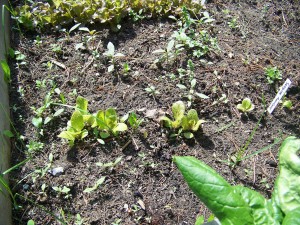
Sanguine Amerliore
The two rows that aren’t doing so well are the ‘Cimmaron’ and ‘Australian Yellow Leaf’ that I planted for comparison (top center and top right).
I’ve also started a four-pack of the ‘Mini Yellow Bell’ pepper which is in with the rest of my pepper seedlings. I have some ‘Hanson’ head lettuce growing which is the SFHV trial variety but which I selected on my own to try as a fall planting last year.
I was asked this by a friend tonight, and it made me think. What have I been reading lately? (I’m only going to count real, bound, ink-on-dead-trees books. Blogs, Facebook, newsfeeds, and webcomics will not count for this purpose.)
Let’s see: fitness, gardening, more fitness, Carmelite spirituality, stage combat, economics, and bits of BritLit.
In case anyone wonders why this blog is named “Eclectic Amateur”, this should help explain.
Well, it’s been a year since I said that I was going to get active on GNOME development again.
Perhaps that was over-optimistic. Real Life™ did not go away and give me copious free time – and even snuck in a curveball or two. Still, I haven’t been completely idle.
The original plan was to use the OMAP Zoom2 development platform to test GNOME using the ARM processor, with a further goal of exploring the OMAP video capability (ultimate motive: enable Cheese). The Zoom II was made available by TI and provided by the GNOME Foundation.

The TI OMAP Zoom2 development system
This was going to be accomplished by using OpenEmbedded and Ångström to build GNOME for ARM. As Ångström has Zoom2 support, this ought to have been simple.
In theory, at least. In practice, I ran into the following obstacles:
- I had not worked with git-based development before, and (at least at the time I started), and the latest-and-greatest pull were probably a bit more bleeding-edge than I should have started with. No big deal there; standard teething troubles for trying to learn how to work with a new project.
- Also at that time, one of the GNOME recipes had a build failure in it, and I was not yet familiar enough with OE and BitBake to fix it myself.
- Working around that build failure, I discovered that my build system didn’t have sufficient disk space to hold a full OE build anyway. (The OE documentation advises you to make sure you have “sufficient” system resources and bandwidth for a complete build, but is frustratingly non-specific about what qualifies as “sufficient”.)
- This was about the time that my build system gave up the ghost anyway.
- Poked at it a bit more with a borrowed build system that did have enough disk space. That one died too.
Lessons learned:
- Be more realistic about how much time I can squeeze in for GNOME projects, and remember to allow for life changing my schedule and commitments.
- Do not underestimate the required beefiness of an OpenEmbedded build machine.
- For OpenEmbedded development, stable branches might be your friend.
Plan B is now under consideration.








Recent Comments